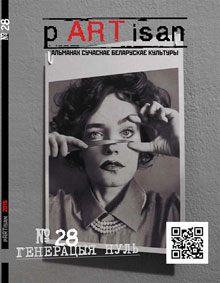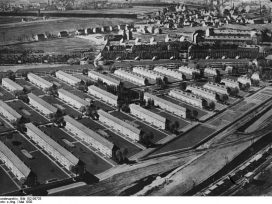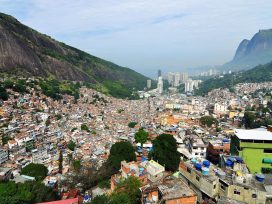When we take the microphone out of the box and switch it to RECORD, we produce a remainder. We hear beyond need. This remainder is the medium of inter-subjectivity. It is a manifestation of trust to be without demand for a time. Trust in/is the process.
Ultra-red
A human being is naturally immersed in the world of sound. This immersion is passive and usually goes unnoticed, except when it becomes an object of attention in its own right, such as in the art forms that utilize the medium of sound. Sound as used by the artist can be both subjective, such that it becomes attached to personal memory, emotions and meanings; and objective, such that it becomes attached to things in the world and changes with the world too, creating an external environment of sound. This objective acoustic world (the environment of sound) supplies a condition for the reproduction of society, a factual material circumstance within which the future is born.

What can you hear in silence?
A question, albeit a little strange: “What is the sound of silence?” This is the question that arises when one approaches the work of sound artist Anton Sarokin entitled Belarus 4’33: Forms of silence, a work exhibited as part of the Apprehension of War project in Berlin. The title and the length of each piece of audio – 4 minutes and 33 seconds – refers to the work of John Cage, who in the middle of the twentieth century composed an empty score to perform four minutes and thirty three seconds of silence. In the context of an exhibition that revolves around the idea of war (that is both in the context of Belarus’s past and in terms if the idea’s recent prominence in the public discourse) – the silence that the artist refers to is socially significant, something that is also being internalized and manifested subjectively. The starting point of the audio-works are real political events, as perceived through the sometimes overlooked materiality of the sonic: there is the violent crackdown on protests in Nezaleznasci square in 2010, the state’s prosecution of two people claimed to be responsible for the 2011 Minsk metro bombing, and on-going attacks on privacy in Belarus. Sarokin documents accounts of these events, through engagement with and reworking contemporary silence, in both its social dimensions and personal implications. This attentiveness to the aural reality of contemporary events renders new meanings produced within the work, and by the audience.
To take a closer look, in one of the four audio works, the amplification of micro-sounds that generally go unnoticed or require an attuned ear, come to the fore: The ambient hum of the underground station; metro doors closing lead into a court hearing, where only one side of the conversation is heard, accompanied by multiple mechanical interferences (typewriters, sounds of lights flashing). This work is based on the recording of the court hearing of the two men later accused of the metro bombing, Dmitry Konovalov and Vladislav Kovalev, who respond to the standard legal questions at their trial (regarding their names, occupations, status, etc.). The questions are repeated twice, but in lieu of the response there is almost total silence. It does not seem to be incidental that the machinery of justice operates one-sidedly, supported by multiple mechanisms of obstruction. The abstract and interfering sounds, which grow into noise, gradually become a single storyline. The noise magnifies and rises, and then ends abruptly with a pulsing silence in the listener’s ears, a resolution, a final death sentence or a final withdrawal from participation in the circus of justice. The noise covers and overflows from the staged spectacle, in which utterances are redundant, given all the decisions that have already been taken.
Trains in motion, gusts of wind and silence – these are what replace reasoning.
What we should (not) be silent about?
In other works, Sarokin also addresses contemporary events, such as in the installation Passport of the Object, for the exhibition Offside that took place in Y gallery in Minsk during the World Hockey Championship in 2014. The idea of manipulating recorded sounds in the project takes a more musical form: a subtle melody of the ice skates sliding on a slick surface, in the rhythm of the construction sites, in a vocal fragment (that of the president’s speech echoed repeatedly until it becomes indiscernible). It is an example of “music concrete”, composed through the arrangement of sounds recorded from natural sources.
The work is entitled Passport of the Object, a reflection on the growing number of construction sites that the artist observed in the time before the Championship. The work emerged in the midst of the commotion from the construction of new high-rises, which changed the appearance of Minsk and testify to the building boom. This building boom was justified at the political level by the priorities of social development. However, should one take a closer look, it appears the aims were to disguise the real purposes, such as the manifestation of power, ideological manipulation and even the monetary returns for those directly involved. It is logical that the city-dwellers should be concerned with other questions: what will happen once the championship is over, and for whom are the ice-rinks being built? Who pays for them? Or, could there be no other, more important development priorities in the social sphere? The buildings are rising, and it cannot be dismissed out of hand that Minsk is changing its appearance, but for the benefit of whom? Andrei Platonov’s 1930s dystopia of collectivization and the acceleration of construction work reads:
Man put up a building – and falls apart himself. Who’ll be left to live then? – doubted Voshchev, lost in his passing thoughtfulness.
The mobilization of resources has hardly led to positive transformations in the city’s environment, rather the processes have benefited an undefined(?) group of people. Sarokin’s work, therefore, offers a critical look at the sport event as a top-down enforced celebration in all its forms, which involve ice-rinks, building sites, decorations such as aurochs with hockey-sticks – as well as temporary liberation and national hospitality (which in no way undermined the dominance of bureaucracy and the functioning of the “police state”).
Who makes our city?
Even more attention was explicitly paid to the notion of a changing urban landscape in the project Beat of Minsk, created by Anton Sarokin and Alexey Naumchik in 2013. Audio mixes were published alongside a corresponding depiction of a given place – a square, a metro stop, a cinema – referring to particular locations in Minsk as re-imagined by the artists, lacking objective precision and defined time boundaries. When listening to the audio mixes there is a sense of floating in time. For example, in Pieramoha: from the day of the inauguration of the cinema in 1950, to the all-too-familiar purchase of the cinema ticket and a hushed conversation, to the cinema soundtrack, back into a voice introducing the film, and falling again into Hiroshima Mon Amour.
If the accurate representation of each of these places is eschewed, what is prominent in the work is the accuracy of the feeling of the place. Pierre Schaeffer has coined a relevant term for such a feeling: “soundmark”, analogous to “landmark”. He defines “soundmark” as a sound that is noticed and regarded by a community, and therefore deserves to be protected. The meaning of the project Beat of Minsk can be said to be the capturing, rearrangement and recirculation of the fragments of aural reality; these fragments, in turn, evoke a recognizable feeling or impression, undo the forgetfulness of mind, retrieve the moments that seemed to have been lost. Thinking this way, the importance of the work lies precisely in this record; or, in other words, the production of evidence of a set of conditions within the society.
The idea that the acoustic environment is a condition for the reproduction of society and relations within it was also developed by Schaeffer back in the 1950s. Through such an understanding, listening to the environment and getting attuned to the sounds produced becomes a political gesture. The increase in the sound level of some of the aural fragments (however marginal they may seem), as it takes place in the works of Sarokin, eventually renders the possibility of new comprehension, and therefore the creation of an active listener who is capable of producing new conditions of social space.
Additionally, the audio mixes in Beat of Minsk blend soundmarks with music chosen by the artist and woven into the sound flow. Modern electronic, sound art, tropicalia and classical music – which is almost entirely absent from the public space (as opposed to the prevalent schlager of 1980s, 1990s and Eurovision-style contemporary pop) – functions as if to point to a possible alternative sounding of the place. This raises a question: can a community endow a public space with a soundtrack of their own (not imposed by an ideological, intentionally debilitating refrain)? As the very notion of the public (as opposed to private) in Belarus does not necessarily mean shared, common, inclusive, democratic, but is most certainly close to state-owned (alienating, average, repulsive), the artist’s work points to the potential for creating the sound of the place, or, to appropriate the place such that it functions differently from when it is appropriated in a top-down fashion. In pointing to this intersection of the apparent immateriality and ideal nature of sound that can be interpreted as non-interfering and private, with sound as a material condition of production of place, the Beat of Minsk purposefully inquires as to whether the social space can be filled with an alternative discourse.
It is in this space between the material conditions and the individual subjectivity that friction occurs, and new forms of social organization can emerge.
Does sound really exist?
As a form of art, soundworks have a particular feature – immateriality. The works are displayed in digital format coded in zeros and ones, exhibited on websites, and attended to at a convenient time and place, potentially as a solitary experience, without the need for social infrastructure (either for their creation or reception). This is very much relevant to the works of Anton Sarokin, which emerged in the context of Belarus and were then exhibited here too at various points, but also have a separate existence on the Internet.
A kind of humanistic view that art would become widely accessible through its fusion with technology and would thus converge with everyday life was an important democratizing aspect of critical thinking in the 1970s. Nowadays, with the emergence of democratic access to new technologies, discussions of post-Internet art continue to be situated around questions of the role of art in society and its critical potential. If the very medium of art is (fleeting) sound, these questions become profoundly important: is sound art capable of providing the space for critical distance so as to resist the world, which continues to hold a pistol to the heads of human beings? Or does sound’s immateriality and ease of circulation point precisely to its impotency? Further, does sound’s immateriality underscore the insignificance of the producer’s labour, which remains invisible and unaccounted for?
While there cannot be a definite answer to these difficult questions, the feature of immateriality is of particular importance in the Belarusian cultural context. Given the near total invisibility for Belarusian artists in the public sphere, and in view of the apparent lack of support mechanisms for art initiatives, artists are determined to take responsibility for producing and displaying their own work. Actual immateriality (or digitality) in this situation is a helpful feature, as it permits entry into the public domain irrespective of the obstacles on the way, and the obstacles themselves become the content of the work to a significant extent. In other words, soundworks are a particular reminder of how the struggle can happen – utilizing sound’s particular fleeting medium. Sarokin’s sound art succeeds in producing a commonality of alternative thinking and doing, and facilitates dialogue that is not supported by institutions, and therefore not undermined by them. If, back in the beginning of 1990s, the space of a school disco was one of the formation of an alternative culture – just as the alternative music scene was and remains – then the immateriality of sound provides an appropriate medium to contest social phenomena and to build new cultural forms. It definitely enables the creation of memory decoupled from (state-induced) attempts to build national identity. It forms a commonality outside of existing channels, and thus reclaims space; even if only a space in one’s own thoughts.







